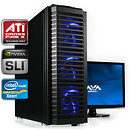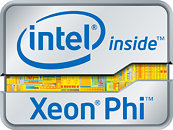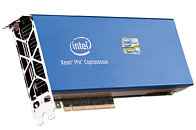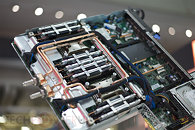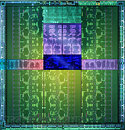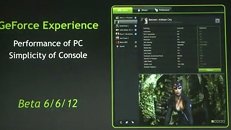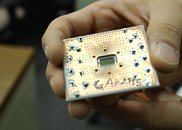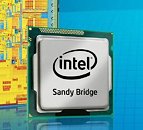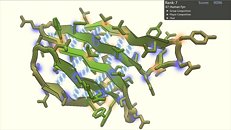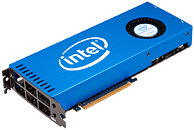AVADirect Now Offers Personal Supercomputer
AVADirect, a leading provider of custom computer systems, offers the first personal supercomputer workstation with Dual 8-Core Xeon CPUs, 192GB Memory and Four Graphics Cards. Because of the close partnership with EVGA, AVADirect now offers ground breaking capabilities based on new EVGA SR-X motherboard with wide variety of component combinations to meet the needs of the most demanding professionals or enthusiasts.
Within the past month, manufacturers began to release new motherboards based on the E5 2600 XEON processors. End-users have seen them offered in rackmount and tower configurations from Supermicro, Asus, and Intel. Now, AVADirect is proud to announce that EVGA has released an enthusiast series motherboard that AVADirect offers in a custom configuration. Supported by the EVGA Classified SR-X dual-socket 2011 motherboard, the configuration boasts a whole new level of performance and expandability, including 7x PCI e expansion slots (with PCI-E 16x 3.0 support), 6x USB 3.0 ports, and 8x internal SATA ports; 4 being SATA III 6Gb/s. More importantly, the system will support up to 192GB of certified, Quad-Channel ECC RAM.
Within the past month, manufacturers began to release new motherboards based on the E5 2600 XEON processors. End-users have seen them offered in rackmount and tower configurations from Supermicro, Asus, and Intel. Now, AVADirect is proud to announce that EVGA has released an enthusiast series motherboard that AVADirect offers in a custom configuration. Supported by the EVGA Classified SR-X dual-socket 2011 motherboard, the configuration boasts a whole new level of performance and expandability, including 7x PCI e expansion slots (with PCI-E 16x 3.0 support), 6x USB 3.0 ports, and 8x internal SATA ports; 4 being SATA III 6Gb/s. More importantly, the system will support up to 192GB of certified, Quad-Channel ECC RAM.
